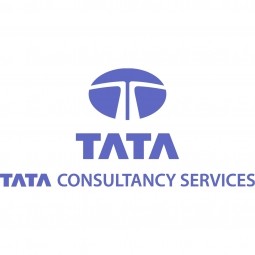Download PDF
SAP's Accelerated Deal Closure through Process Automation

Technology Category
- Analytics & Modeling - Machine Learning
- Analytics & Modeling - Robotic Process Automation (RPA)
Applicable Industries
- Equipment & Machinery
- Finance & Insurance
Applicable Functions
- Maintenance
- Procurement
Use Cases
- Chatbots
- Leasing Finance Automation
Services
- Cloud Planning, Design & Implementation Services
The Challenge
SAP was grappling with the challenge of managing an increasing number of cloud deals. The rise in configurable cloud component deals necessitated a reduction in manual activity and a scaling up and automation of processes for order management, master data maintenance, and financial reporting. The high volume of cloud deals required a swift and efficient response, which was difficult to achieve with the existing manual processes. The challenge was to automate these processes to meet the growing demand and improve efficiency.
The Customer
SAP SE
About The Customer
SAP is a multinational software corporation that provides enterprise software to manage business operations and customer relations. The company is particularly known for its ERP software. In recent years, SAP has seen a surge in the number of configurable cloud component deals. To keep up with this demand, the company needed to reduce manual activity and scale and automate processes for order management, master data maintenance, financial reporting, and more. The company sought to improve efficiency and productivity across its various lines of business through automation.
The Solution
To address these challenges, SAP partnered with TCS to establish a center of excellence (CoE) for the SAP Intelligent Robotic Process Automation (RPA) platform. This platform uses artificial intelligence, application programming interfaces, metadata, and machine learning to improve bots. The CoE was designed to provide the expertise needed to execute key automation projects. It reduced the human touchpoints needed to process the high volumes of cloud deals by strategically deploying bots to automate multiple complicated steps and functions in areas like presales, bad debt provisioning, bank reconciliation, and procurement. The CoE also governed automation processes, starting with assessing the best use cases and continuing with intelligent automation lifecycle management. It was responsible for the validation, prioritization, development, and maintenance of automation solutions, alongside DevOps delivery and constant innovation.
Operational Impact
Quantitative Benefit
Related Case Studies.

Case Study
Smart Water Filtration Systems
Before working with Ayla Networks, Ozner was already using cloud connectivity to identify and solve water-filtration system malfunctions as well as to monitor filter cartridges for replacements.But, in June 2015, Ozner executives talked with Ayla about how the company might further improve its water systems with IoT technology. They liked what they heard from Ayla, but the executives needed to be sure that Ayla’s Agile IoT Platform provided the security and reliability Ozner required.

Case Study
IoT enabled Fleet Management with MindSphere
In view of growing competition, Gämmerler had a strong need to remain competitive via process optimization, reliability and gentle handling of printed products, even at highest press speeds. In addition, a digitalization initiative also included developing a key differentiation via data-driven services offers.

Case Study
Predictive Maintenance for Industrial Chillers
For global leaders in the industrial chiller manufacturing, reliability of the entire production process is of the utmost importance. Chillers are refrigeration systems that produce ice water to provide cooling for a process or industrial application. One of those leaders sought a way to respond to asset performance issues, even before they occur. The intelligence to guarantee maximum reliability of cooling devices is embedded (pre-alarming). A pre-alarming phase means that the cooling device still works, but symptoms may appear, telling manufacturers that a failure is likely to occur in the near future. Chillers who are not internet connected at that moment, provide little insight in this pre-alarming phase.

Case Study
Premium Appliance Producer Innovates with Internet of Everything
Sub-Zero faced the largest product launch in the company’s history:It wanted to launch 60 new products as scheduled while simultaneously opening a new “greenfield” production facility, yet still adhering to stringent quality requirements and manage issues from new supply-chain partners. A the same time, it wanted to increase staff productivity time and collaboration while reducing travel and costs.

Case Study
Integration of PLC with IoT for Bosch Rexroth
The application arises from the need to monitor and anticipate the problems of one or more machines managed by a PLC. These problems, often resulting from the accumulation over time of small discrepancies, require, when they occur, ex post technical operations maintenance.

Case Study
Robot Saves Money and Time for US Custom Molding Company
Injection Technology (Itech) is a custom molder for a variety of clients that require precision plastic parts for such products as electric meter covers, dental appliance cases and spools. With 95 employees operating 23 molding machines in a 30,000 square foot plant, Itech wanted to reduce man hours and increase efficiency.





